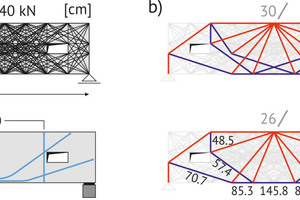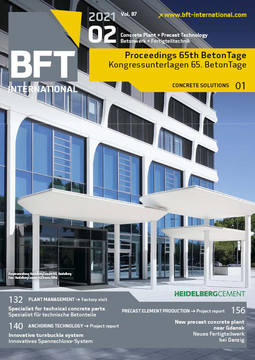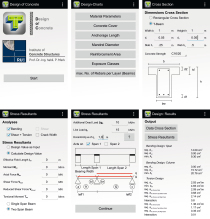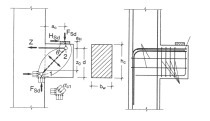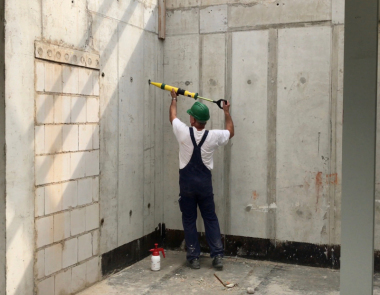Where to put the reinforcement? – Finding the right strut-and-tie model through optimization
D-regions are usually designed using strut-and-tie models (STM) [1]. For complex structural geometries, however, generating suitable STM is challenging. The flow of forces must be known, taking into account the boundary conditions of adjacent structural areas. For this reason, FE stress computations serve as basis to derive statically consistent STM, which ensure equilibrium of forces. In the case of deep beams with openings, for example, this typically iterative procedure requires sufficient experience and engineering expertise. Developing STM thus often proves to be time-consuming and may be prone to errors.
A computational approach to automatically generate STM based on the method of topology optimization is presented. Starting from a ground structure consisting of struts and ties connected to each other to a predefined degree (Fig. a), the optimization algorithm reduces the number of members successively while maximum structural stiffness is pursued with the remaining. The degree of reduction
(i.e. the complexity of the resulting STM) can be controlled through intuitive parameters, such as the total number of permissible
struts and ties (Fig. b) [2]. The member forces can then be used to derive a reinforcement layout (Fig. c). The method is validated against established STM and also applied to several more complex structures
(deep beams, corbels, girders). Notes and recommendations
for practical application are given and the superiority of the automated,
optimization-aided generation of STM is demonstrated.

